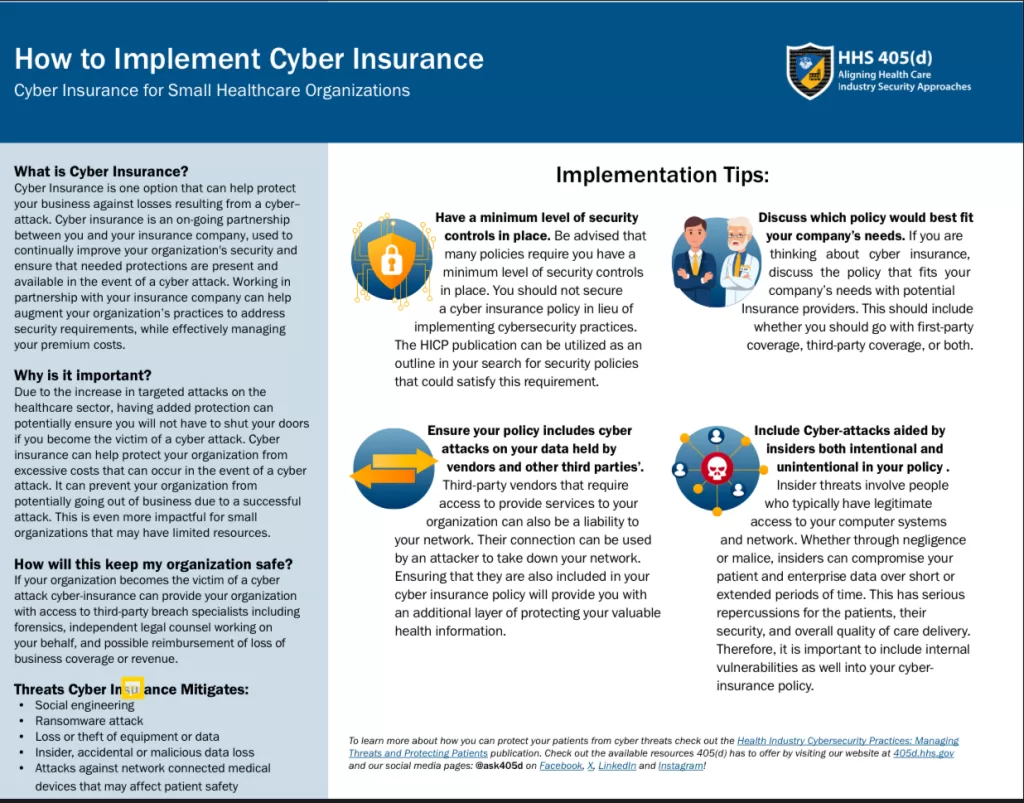To bolster cybersecurity defenses specifically tailored for small healthcare organizations, the Department of Health and Human Services (HHS) has issued a one-page handout delineating the significance of cyber insurance and several implementation tips. Let’s take a look at it.
Cyber insurance is a critical safeguard against the increasing onslaught of cyber threats. This protection offers small healthcare organizations a lifeline in the event of an attack. Developing an ongoing alliance between the organization and the insurance provider cushions against financial losses. It also helps galvanize efforts to enhance security measures.

With targeted assaults on the healthcare sector escalating, the imperative for added protection looms large. Cyber insurance emerges as a vital tool, mitigating potential business closure after a successful cyber onslaught. Particularly for smaller entities grappling with resource constraints, its role becomes even more pronounced.
In a cyber breach, the right cyber insurance coverage arms organizations with essential support. This includes access to third-party breach specialists, legal counsel, and possible reimbursement for loss of business coverage. This proactive approach mitigates financial repercussions. It also underscores the commitment to fortify organizational resilience against evolving cyber threats.
Implementation Tips
The implementation tips delineated in the handout serve as a roadmap for organizations navigating the labyrinth of cyber insurance. First, assessment of policies is vital. Organizations must ascertain the best fit for their needs, whether first-party, third-party, or a combination thereof.
Furthermore, thorough scrutiny of the policy to ensure coverage extends to cyberattacks on data held by vendors and third parties is advised. Given the potential vulnerabilities posed by third-party connections, their inclusion in the policy serves as an additional safeguard against network infiltrations.
Moreover, adherence to minimum security controls is imperative, with many policies mandating their implementation as a prerequisite. Cyber insurance is no panacea for lax cybersecurity practices; hence, organizations must fortify their defenses by procuring insurance coverage.
Lastly, the inclusion of insider threats, whether intentional or unintentional, in the policy underscores the holistic approach required to safeguard patient data and ensure uninterrupted quality care delivery.
In essence, the HHS handout underscores the indispensable role of cyber insurance in fortifying the cyber resilience of small healthcare organizations, accompanied by actionable implementation tips to navigate the complex cyber insurance landscape.
Source: HHS Guide for Small Healthcare Organizations